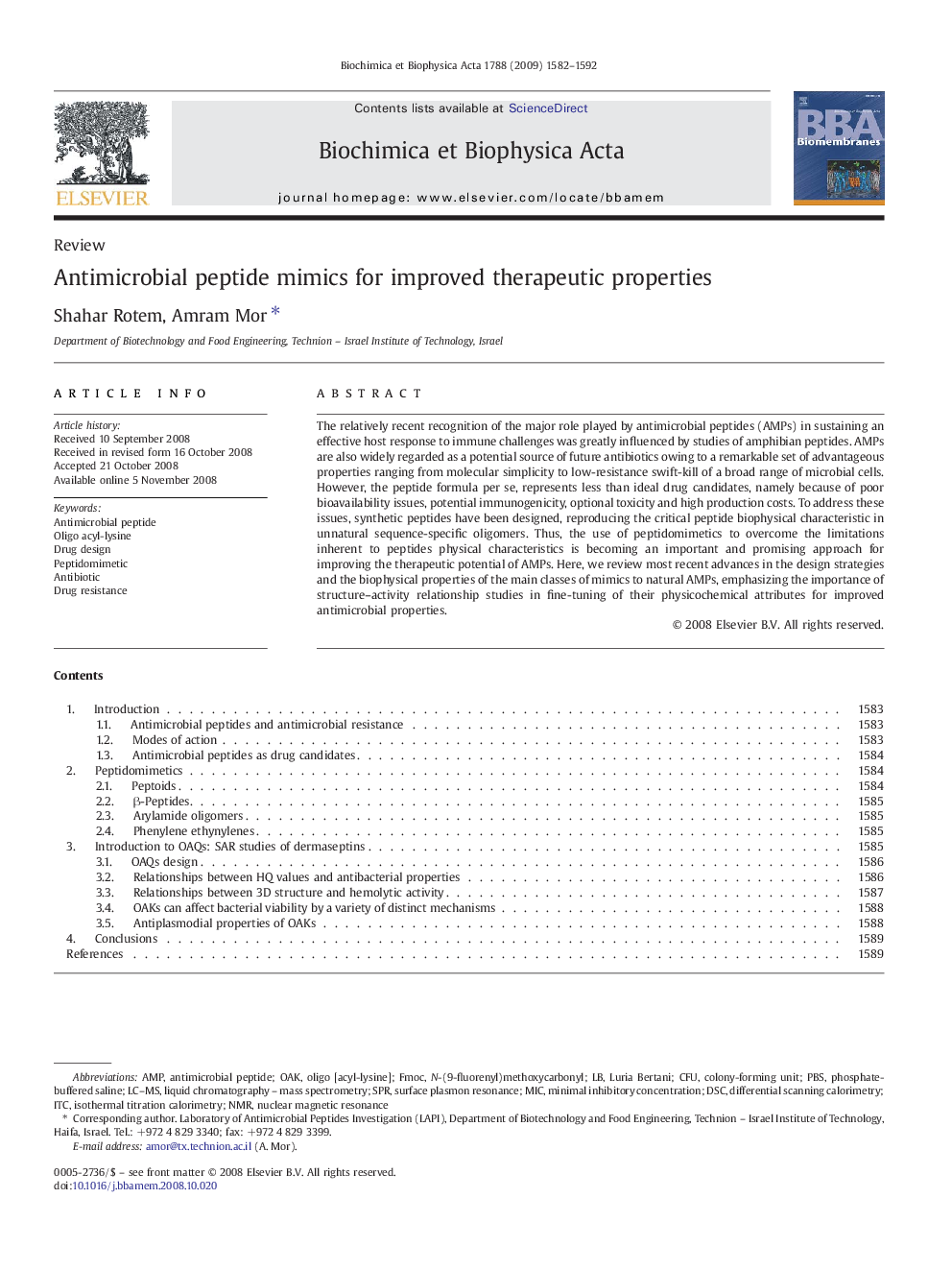| Article ID | Journal | Published Year | Pages | File Type |
|---|---|---|---|---|
| 1945096 | Biochimica et Biophysica Acta (BBA) - Biomembranes | 2009 | 11 Pages |
The relatively recent recognition of the major role played by antimicrobial peptides (AMPs) in sustaining an effective host response to immune challenges was greatly influenced by studies of amphibian peptides. AMPs are also widely regarded as a potential source of future antibiotics owing to a remarkable set of advantageous properties ranging from molecular simplicity to low-resistance swift-kill of a broad range of microbial cells. However, the peptide formula per se, represents less than ideal drug candidates, namely because of poor bioavailability issues, potential immunogenicity, optional toxicity and high production costs. To address these issues, synthetic peptides have been designed, reproducing the critical peptide biophysical characteristic in unnatural sequence-specific oligomers. Thus, the use of peptidomimetics to overcome the limitations inherent to peptides physical characteristics is becoming an important and promising approach for improving the therapeutic potential of AMPs. Here, we review most recent advances in the design strategies and the biophysical properties of the main classes of mimics to natural AMPs, emphasizing the importance of structure–activity relationship studies in fine-tuning of their physicochemical attributes for improved antimicrobial properties.
